What is the difference between extra virgin olive oil and all the other labels? What’s the best olive oil to buy? Does extra virgin olive oil really have health benefits? Can you cook with olive oil? How do you store it? This easy guide to olive oil will answer all these questions and more!
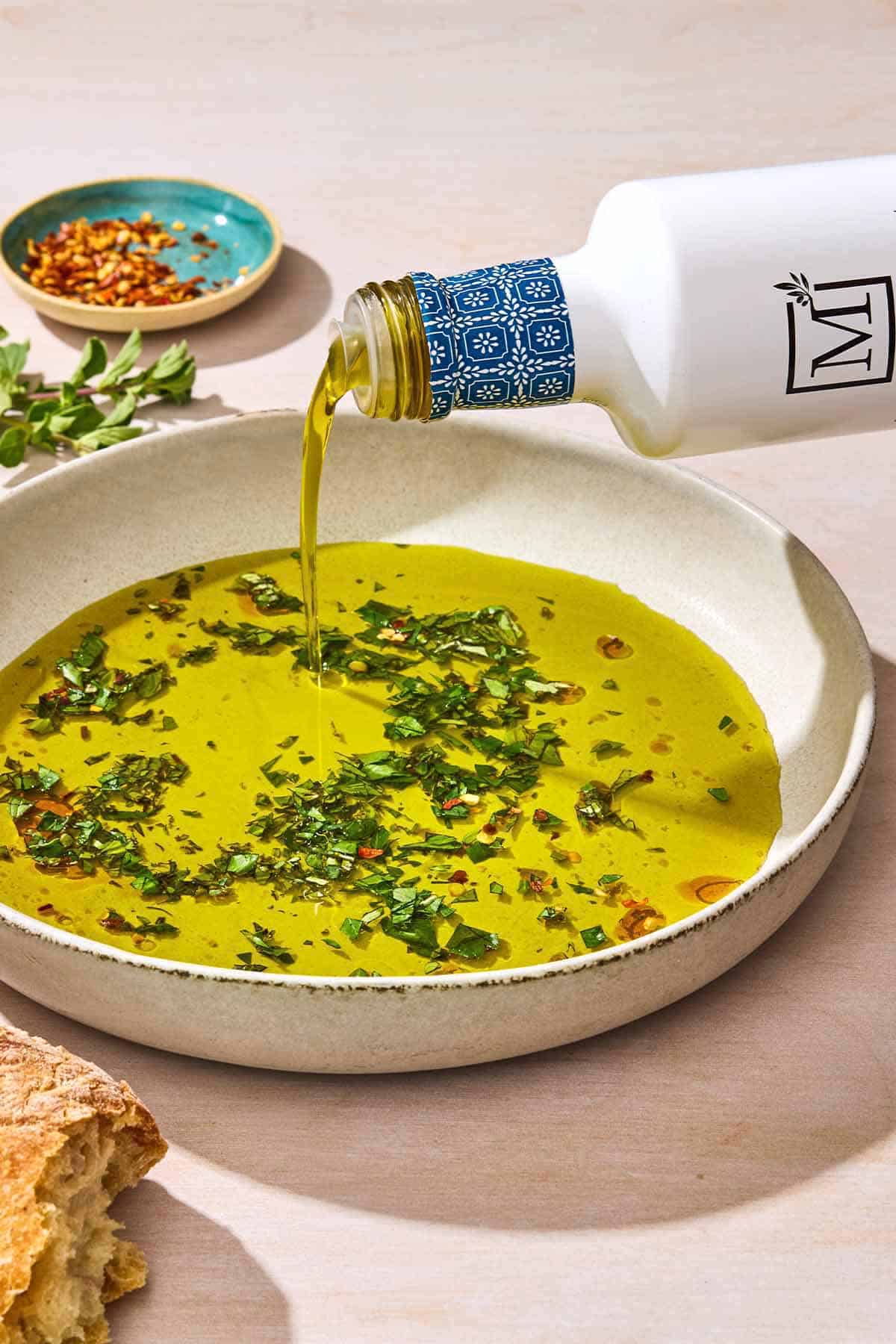
Extra virgin olive oil—EVOO, for short—is the liquid gold of the Mediterranean. It is an essential ingredient that is central to the identity of Mediterranean cooking and the Mediterranean diet, and, as I like to say, it’s the start of everything delicious!
Olives have known health benefits and olive oil is known for its nutritional benefits (you don’t have to take our word for it, even researchers at Harvard University agree) and its versatility. I use it in everything from dressings and Roasted Cabbage to Chocolate Oilve Oil Cake and my favorite banana bread.
As a Mediterranean home cook whose favorite and most-used ingredient is Extra Virgin Olive Oil, I get a lot of questions about it. What should I look for when buying olive oil? What’s the best olive oil? Can I cook with it? And on and on.
Navigating the murky waters of buying quality olive oil can be a bit complicated. I put together this simple guide to help answer the most frequently asked questions about olive oil and share everything I know.
As always, please remember the information shared here on The Mediterranean Dish is intended for your general knowledge. It is not intended as a medical diagnosis or advice. Please be sure to consult your healthcare provider before trying a new diet or a way of eating. Never disregard professional advice or delay seeking treatment based on what you read. Here we go!
Table of Contents
- What is Olive Oil?
- Can I Cook with Olive Oil?
- How is Olive Oil Made?
- Types of Olive Oil
- What is virgin olive oil?
- How is extra virgin olive oil different from regular olive oil?
- What is pure olive oil?
- What is light olive oil?
- Health Benefits of Extra Virgin Olive Oil
- What to Look for When Buying Olive Oil?
- What is the Smoke Point of Extra Virgin Olive Oil?
- Can I Cook or Bake with Olive Oil Instead of Vegetable Oil?
- Does Olive Oil Go Bad?
- How to Store Olive Oil
- My Favorite Olive Oils
- Olive Oil Shines in These Recipes
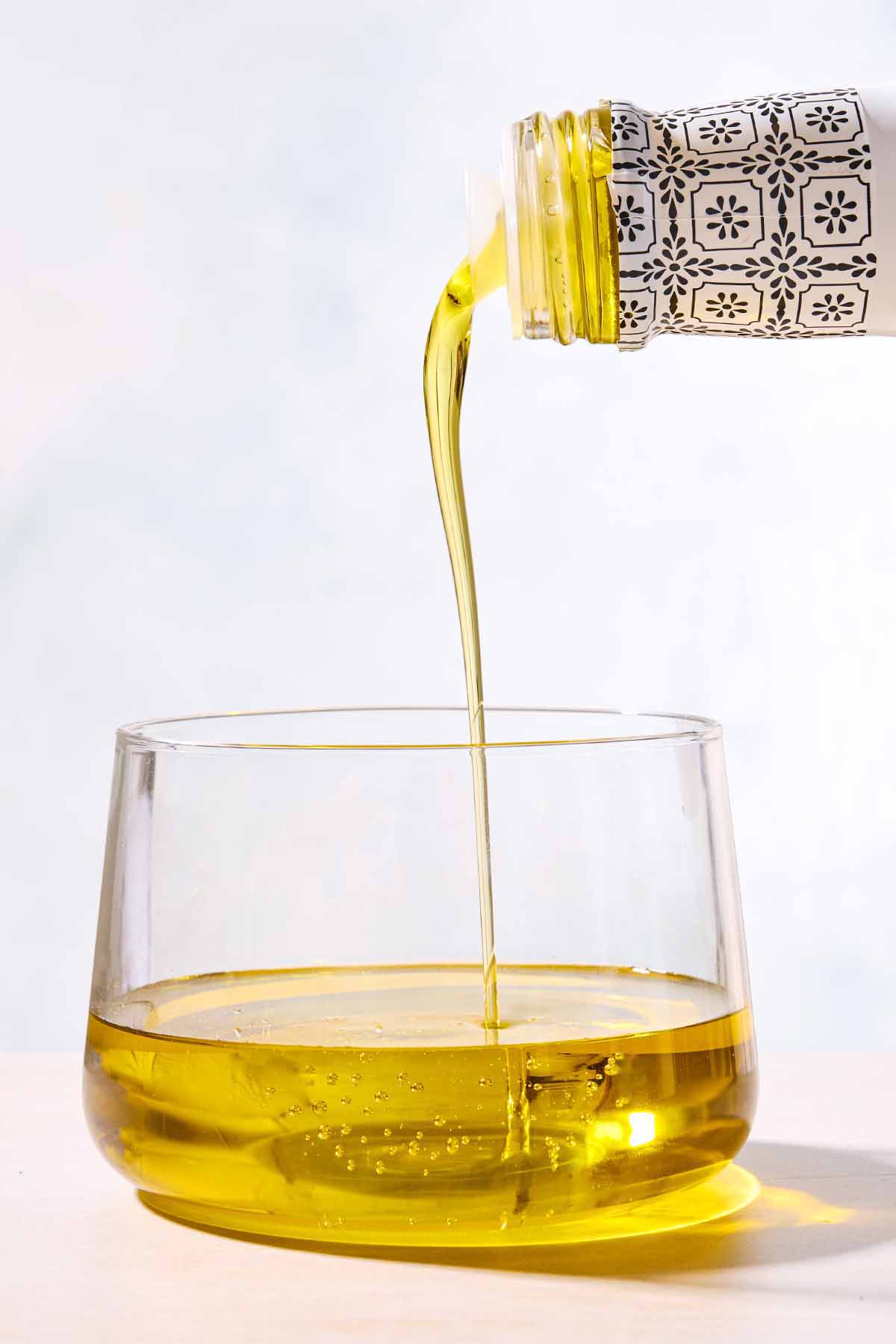
What is Olive Oil?
Olive oil is the type of oil that is naturally extracted from olives, the fruit of olive trees.
Olive trees are low and slow-growing trees that thrive in Mediterranean climates, which helps explain how olive oil has come to be such an important ingredient in many Mediterranean cultures.
Olives ripen throughout the summer and are harvested in the fall. Large olive groves harvest the trees by shaking the fruit free and collecting it. Smaller farms use hands-on harvest methods including hand raking. Another more relaxed harvest method involves spreading nets on the ground to collect the olives as they ripen and fall all on their own.
Once harvested, the olives are washed and often fanned to remove any debris or extra leaves, then they are ready for pressing.
Can I Cook with Olive Oil?
As a home cook who uses olive oil in everything, from a big pot of stew to baking my favorite apple cake, this is my favorite question of all.
The short answer is yes, you can cook with olive oil. You may have heard that you should not cook with olive oil, but that myth has been proven wrong by multiple government and academic agencies including the Culinary Institute of America.
In a study by the University of Barcelona, published in the journal Antioxidants, researchers confirmed that olive oil retains large amounts of its healthy compounds when used for cooking. While there was a decrease in the amount of polyphenols in the oil when it is exposed to heat, the amounts of both antioxidants and polyphenols remained quite high.
I know this is the biggest question people ask, so I wrote a whole post about cooking with olive oil.
How is Olive Oil Made?
Olive oil is produced by mashing ripe (and sometimes green, nearly ripened) olives and grinding them into a paste. Next, the olives undergo a process called malaxation, where the paste is slowly churned with water.
Malaxation, which happens for between 20 and 40 minutes, encourages the fat particles, the olive oil, to separate from the olive juice, the liquid present in the flesh of the olive fruit. Even though water is added, which one might think would dilute the oil, the process actually increases the amount of oil extracted from the fruit. Finally, the processor runs the paste through a centrifuge to separate the oil from the water and solids.
The result is unfiltered extra virgin olive oil, which is then filtered to remove any sediment, then tested to ensure it meets several rigorous standards. Finally, it’s bottled.
When this process happens with minimal or no additional heat or chemicals, you get the good stuff! Cold-pressed extra virgin olive oil, or as I like to say, the best olive oil.
Further processing of the olive paste mixture, including those of adding chemical solvents or warming the mixture, might also be used to extract even more olive oil out of it. These processing steps yield refined olive oils and not those labeled “extra virgin.”
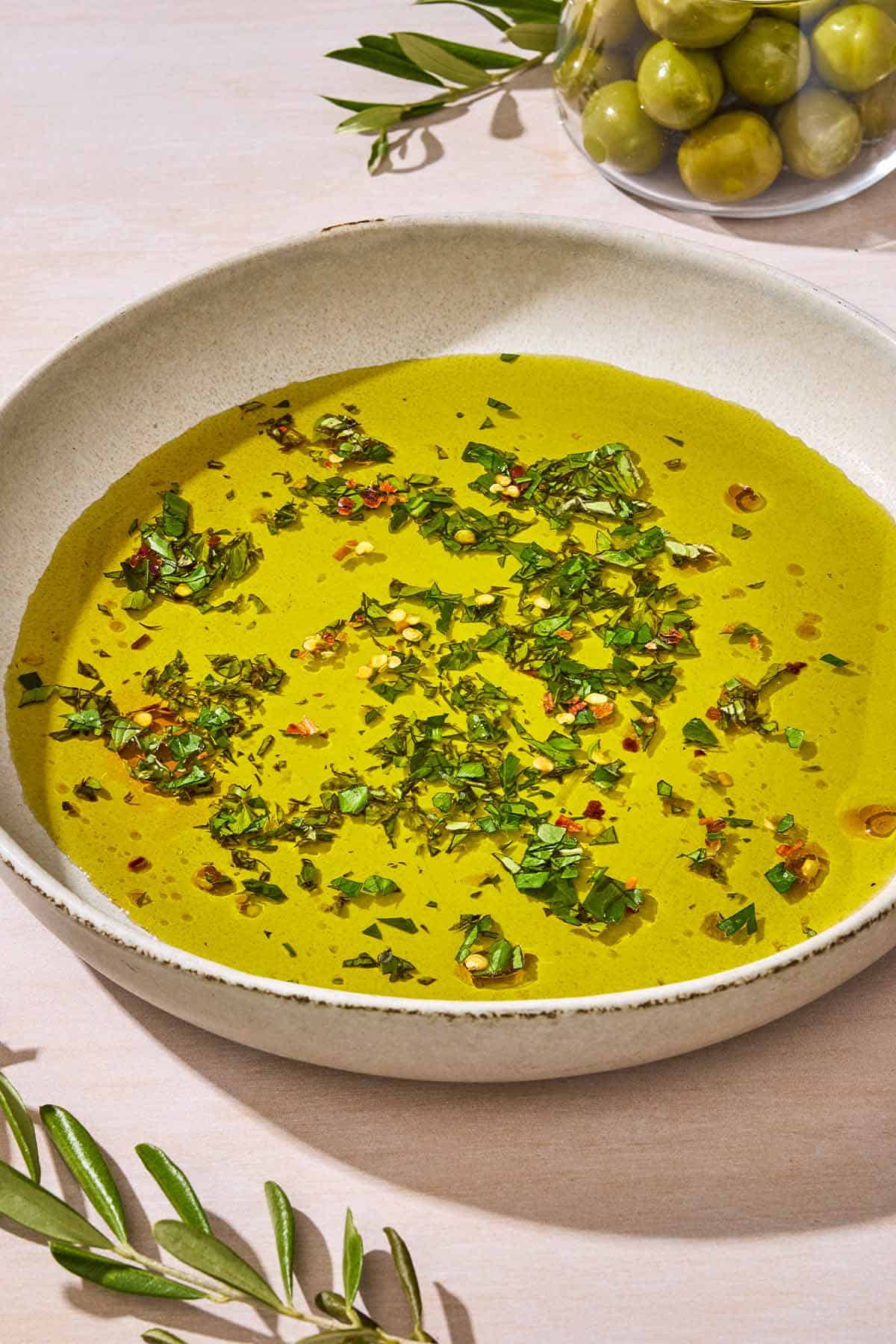
Types of Olive Oil
There are four main types of olive oil: extra virgin olive oil, virgin olive oil, pure olive oil, and light olive oil. They can be initially categorized based on the means of production and also quality standards revealed by testing. For a full guide on tasting notes of extra virgin olive oil, check out our guide: How To Taste Olive Oil: A Step-By-Step Guide To Go From The Basics To The Pros.
What is virgin olive oil?
Even though virgin olive oil is similar to extra virgin olive oil, it is not bottled and sold at your local grocery store. Virgin olive oil, which may be identical in production to extra virgin olive oil, has been graded as slightly lower in quality because it has a slightly higher level of acidity (around 1.5%).
Though you aren’t likely to encounter a bottle of olive oil just labeled “virgin” for sale, virgin oils are often blended with refined olive oils to make the product labeled “pure” olive oil.
How is extra virgin olive oil different from regular olive oil?
Extra virgin olive oil (EVOO) is my preferred type of olive oil, as it is the least- processed and most rich-tasting olive oil. Quality cold-pressed EVOO must have an acidity level of 0.8% or less, and the lower the acidity levels, the higher the quality. Our Greek Early Harvest EVOO, for example, has an acidity level of 0.21%.
EVOO can range in color from light yellow to deep emerald green. Its flavor reflects the ripeness level and the type of olives it is made from. Some are more peppery and others are more buttery. Neither flavor is considered better! Picking a favorite extra virgin olive oil is a matter of personal preference.
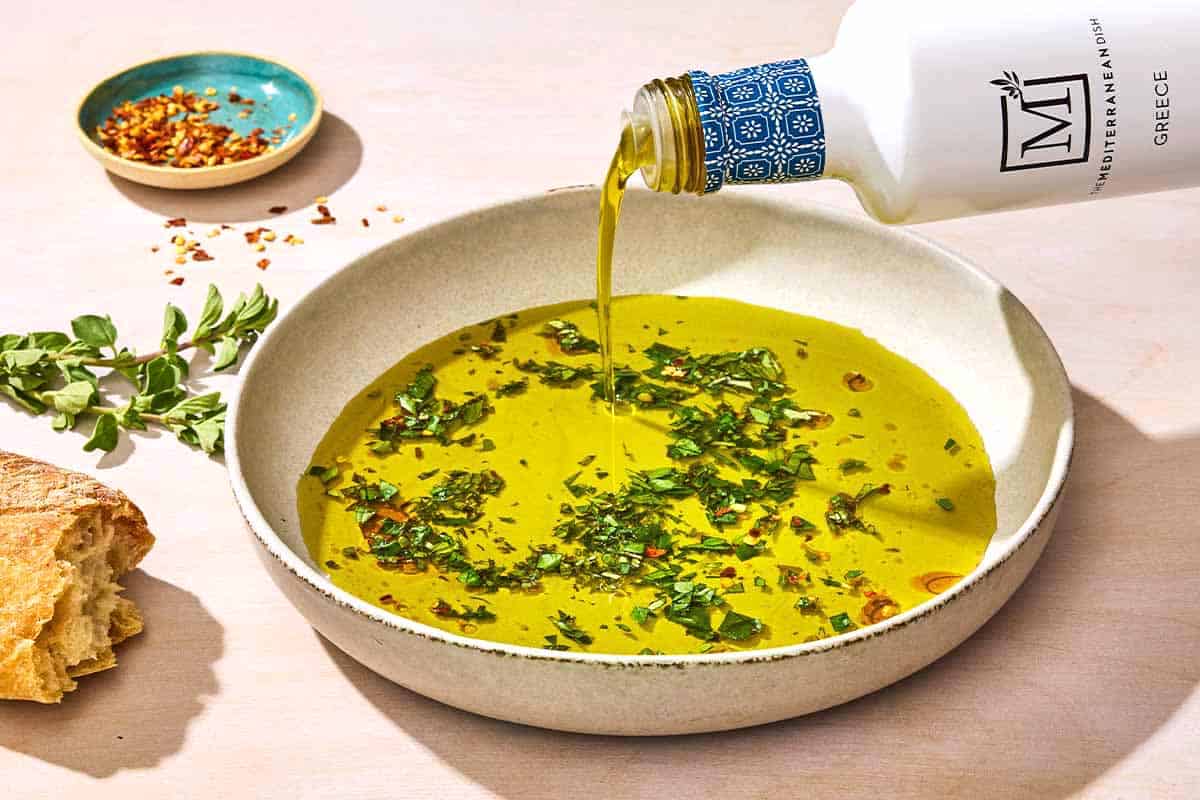
What is pure olive oil?
Pure olive oil is the category of most olive oil you’ll likely find at the grocery store that doesn’t fall into the category of extra virgin.
To put it simply, when the term “pure” is used, it is meant to tell you that the bottle contains only olive oil. However, it is often a blend of virgin oils (about 15% to 20%) and refined olive oils that may have been extracted using heat and/or solvents. These are more neutral-tasting oils with a higher smoke point often recommended for all-purpose cooking applications.
What is light olive oil?
Contrary to what its name suggests, light olive oil does not have fewer calories and it is not a low-fat form of olive oil. The term “light” refers to the flavor rather than the caloric content. Like pure olive oil, light olive oil is a blend of oils, and it has a higher smoke point than extra virgin olive oil.
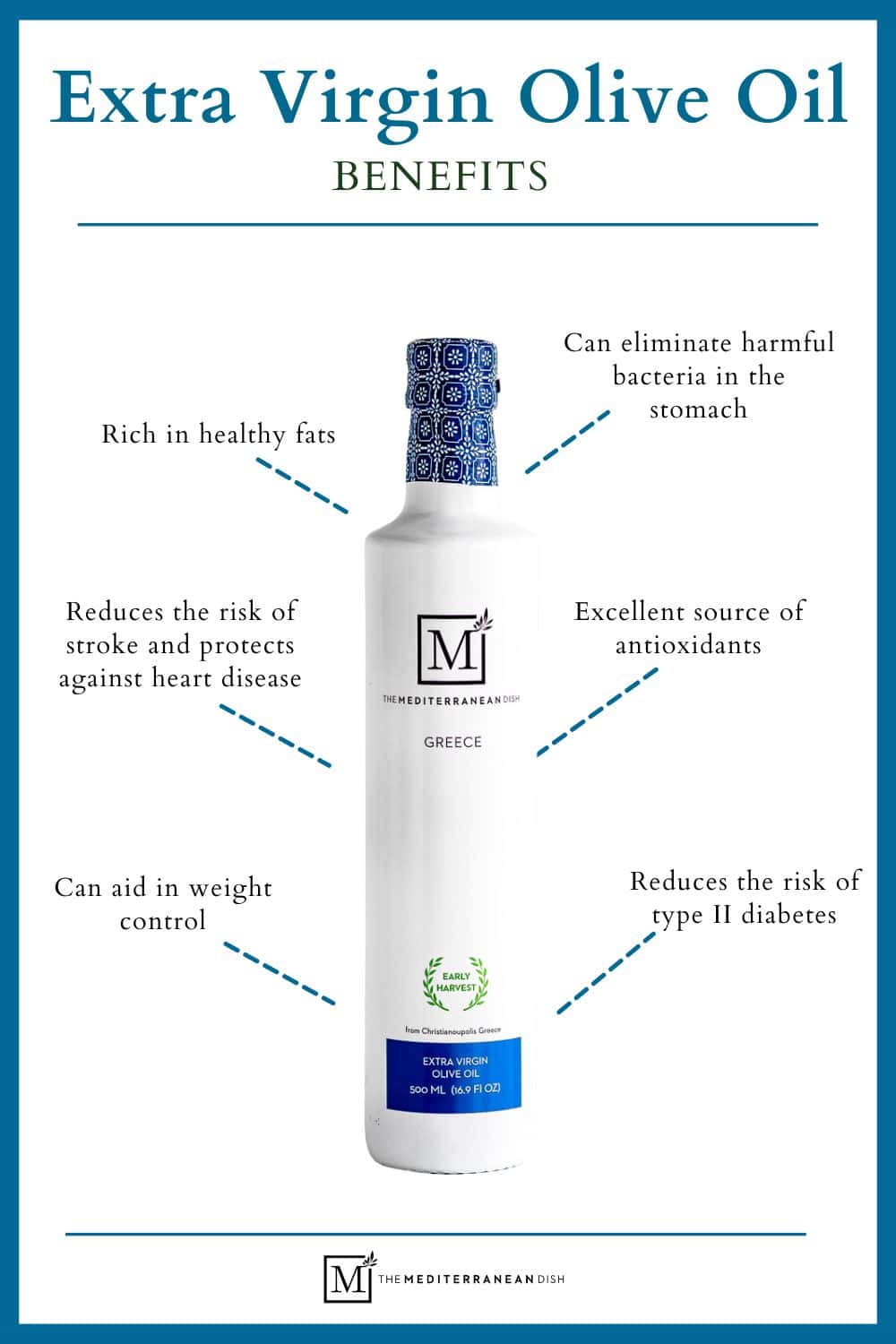
Health Benefits of Extra Virgin Olive Oil
Extra virgin olive oil has long been touted as one of the healthiest oils on Earth. Here are some benefits you may have read about it:
- Excellent source of antioxidants Good EVOO is also rich in polyphenols, which have antioxidant and anti-inflammatory properties that protect against free radical damage.
- Rich in healthy fats EVOO is predominantly made up of a monounsaturated fat called oleic acid, an anti-inflammatory omega-9 fatty acid that may also improve insulin sensitivity.
- Reduces the risk of stroke and protects against heart disease EVOO is known to lower LDL (“bad” cholesterol) and increase HDL (“good” cholesterol). High cholesterol increases your risk for both stroke and heart disease.
- Reduces the risk of type 2 diabetes Studies have shown that extra virgin olive oil has positive effects on blood sugar and insulin levels.
- Can aid in weight control It sounds a bit counterintuitive since a tablespoon of extra virgin olive oil contains 14 grams of fat. However, because of its good fat content, EVOO is satisfying and helps control hunger.
- Can eliminate harmful bacteria Studies have shown that extra virgin olive oil is able to fight off eight strains of the harmful bacterium Helicobacter pylori, which lives in the stomach and can cause stomach issues such as ulcers.
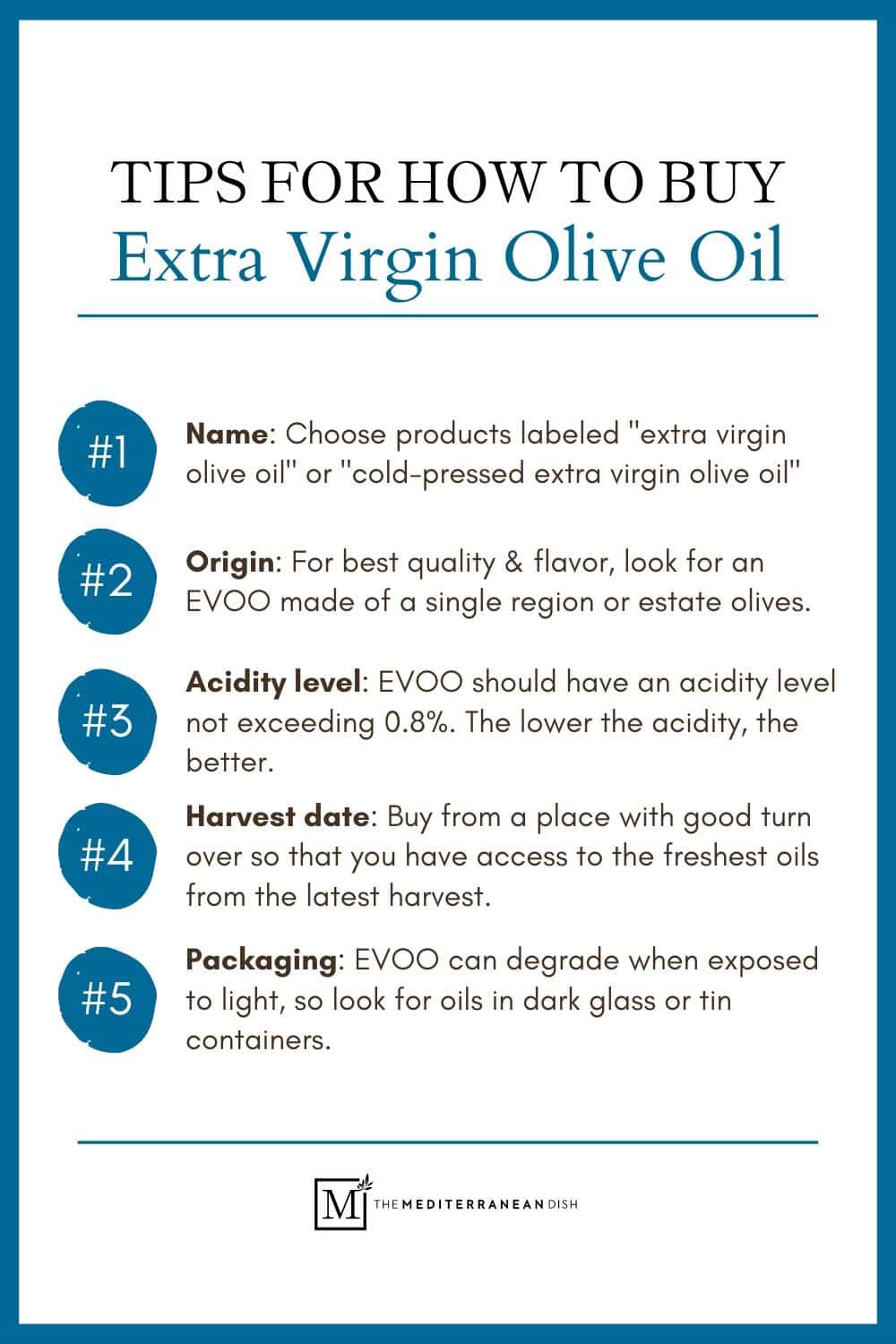
What to Look for When Buying Olive Oil?
Not sure what you should look for when you are searching for quality extra virgin olive oil? Here are a few things that will help!
- Name: Ensure the label clearly states that the product is cold-pressed “extra virgin olive oil.” Light olive oil, pure olive oil, refined olive oil are often processed with heat, are typically blends of different oils, and won’t provide the same health benefits as extra virgin olive oil.
- Origin: The best olive oils in the world are “single region” or “single estate.” Looking at a bottle, you should be able to tell the place of origin where the olives were grown and pressed. When the specific place is not listed, the olive oil is likely a mass-produced blend containing oils from different groves or even different parts of the world. This doesn’t mean that all EVOO blends are bad, but it can mean that there’s less control over the quality of the olives used, and it is likely a more mass-market oil.
- Type of olives: The label should reflect the exact type of olives used in making the oil. Think of how different grapes produce different-tasting wines; it’s the same with olives and olive oils. The taste will differ depending on the olives used.
- For example, our Italian Nocellara EVOO is made from Nocellara del Belice olives cultivated in Agrigento, Sicily. It is a moderately intense EVOO with hints of freshly picked tomatoes.
- Our Greek Early Harvest Extra Virgin Olive Oil comes from Koroneiki olives cultivated on the Kotsovolos Family Estate in Christianoupolis, Greece. It is bold and pungent with a peppery finish.
- Harvest date: If a bottle is labeled with a harvest date or harvest season year, it is a good indicator that it was made with care. Although an unopened bottle of EVOO has a shelf life of nearly 2 years, it’s best to buy from a place with good turnover so that you have access to the freshest oils from the latest harvest.
- Packaging: Buy olive oils that are packaged to prevent sun exposure. You are looking for dark glass, colored, opaque bottles or cans. This is important because olive oil can deteriorate when exposed to light.
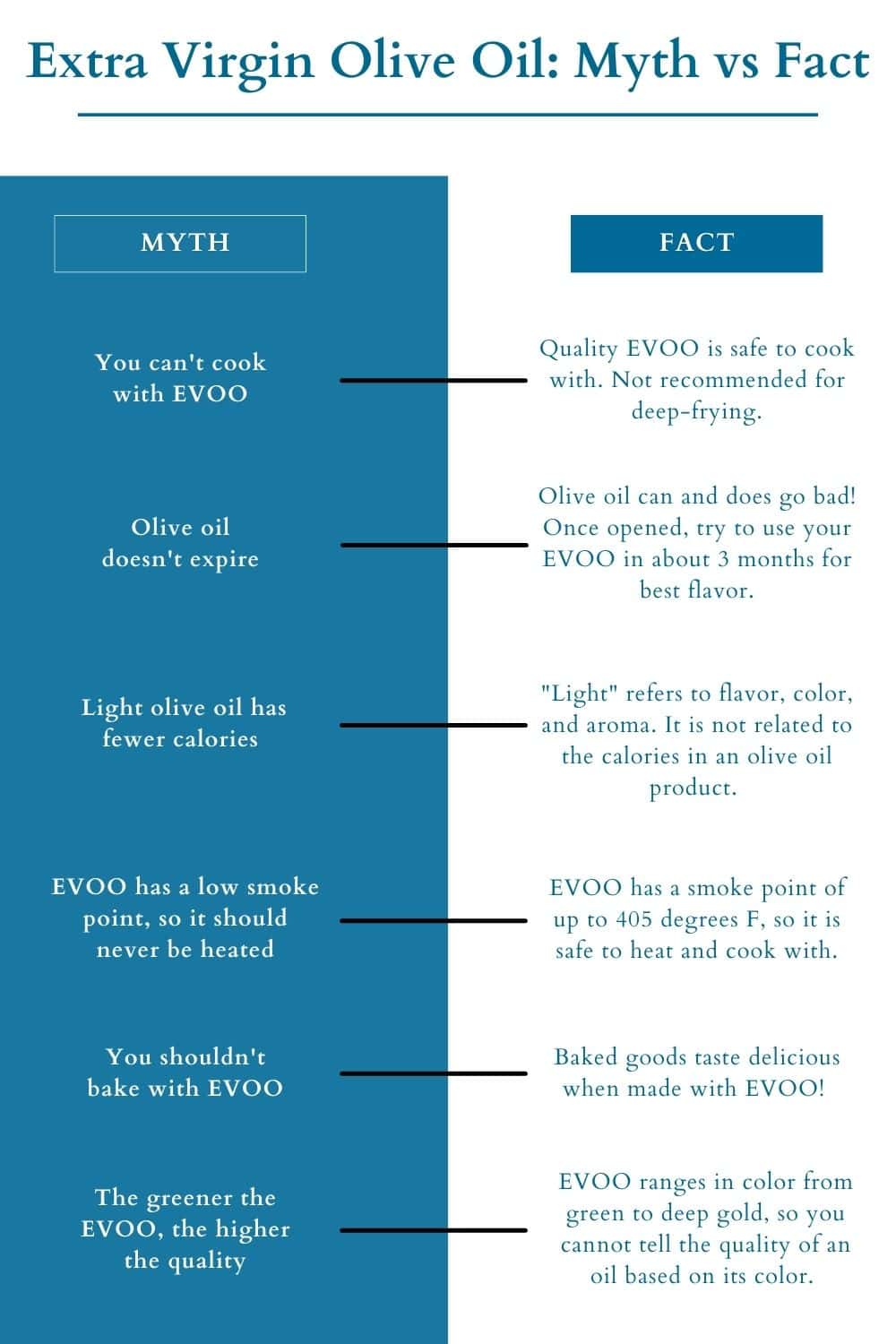
What is the Smoke Point of Extra Virgin Olive Oil?
The smoke point of an oil refers to the temperature at which it begins to smoke and degrade. At this point, harmful compounds form in the oil. When it reaches its smoke point, an oil also loses much of its nutrients and antioxidant properties.
Extra virgin olive oil has a smoke point of between 374 and 405°F (190 to 207°C). While this is a bit lower than other types of oils, it is still safe to cook and even bake with quality EVOO. Good quality EVOO will also have a higher smoke point than its lower-quality counterparts.
But smoke point is not actually the most important factor when it comes to deciding on a cooking oil, according to the North American Olive Oil Association. Instead, focus on the oxidative stability of an oil. Oxidative stability refers to how resistant the oil fats are to reacting when exposed to oxygen, heat, and light.
Olive oil is rich in monounsaturated fats, which are relatively stable at high heat and less likely to undergo oxidization. The type of fats we should be concerned about at high temperatures are polyunsaturated fats, which produce more harmful compounds when heated — even in oils with much higher smoke points than EVOO.
Can I Cook or Bake with Olive Oil Instead of Vegetable Oil?
You can use extra virgin olive oil instead of vegetable oil in most cases. For cooking and baking, EVOO is a healthier option than vegetable or seed-based oils, and the flavor is more pronounced. If using Olive Oil for baking use a fruity rather than peppery variety. I like our mild and buttery Arbequina Olive Oil for baking.
The only instance where I would consider vegetable oil is for deep frying. Olive oil is an investment and deep frying requires a lot of oil. If your budget allows go ahead and deep fry with olive oil, but a neutral-flavored and more cost-effective oil might be a better option.
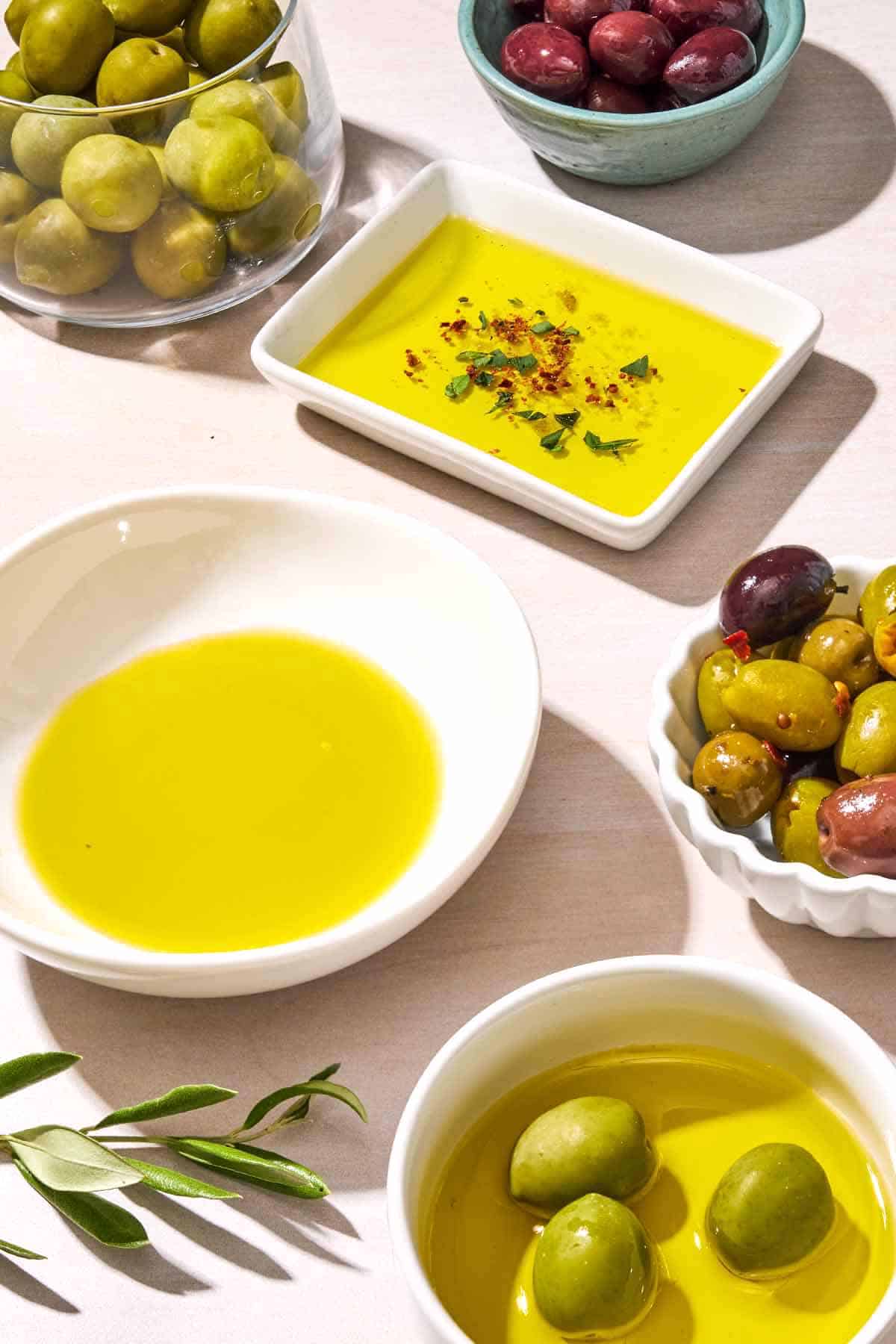
Does Olive Oil Go Bad?
Yes, unfortunately, oils can go bad! Extra virgin olive oil is no exception. There are two ways to know if your extra virgin olive oil is rancid: smell and taste.
- Rancid olive oil smells waxy, almost like crayons. It can also smell stale. Fresh olive oil smells robust and bright.
- If you taste the olive oil and it’s sour it’s likely rancid and time to throw it out.
- Keep an eye on your oil’s harvest date, as well as note when you opened the bottle. If needed write the date you open your EVOO on the label and use it within 3 months of opening.
Consider this permission to enjoy your good quality olive oils! Don’t try to save them for a special meal or occasion. The sooner you use them, the better they will taste!
How to Store Olive Oil
To maintain freshness and flavor, it is important to store your olive oil correctly. It’s an investment in your cooking and your health!
- Store extra virgin olive oil away from light and heat.
- A cool dark place is best, like a pantry or cabinet.
- While convenient to keep olive oil near the stove it’s not the best place to preserve the quality of the oil as light and head and damage it.
- A bottle of unopened olive oil will last for 18 to 24 months.
- Once opened use the olive oil within 3 months.
My Favorite Olive Oils
I’ve been using extra virgin olive oil for years, and you can find my favorites over at our online shop. We started with just one Greek varietal from one family farm, and have since expanded to include olive oils with high polyphenols counts. We currently carry rich, flavorful olive oils from Greece, Spain, California, and Italy.
Browse all Mediterranean recipes.
Visit Our Shop.
Olive Oil Shines in These Recipes
Mediterranean Diet Recipes
Crispy Olive Oil Fried Brussels Sprouts
Breakfast
Za’atar Eggs Fried in Olive Oil
Desserts
Orange Cardamom Olive Oil Cake
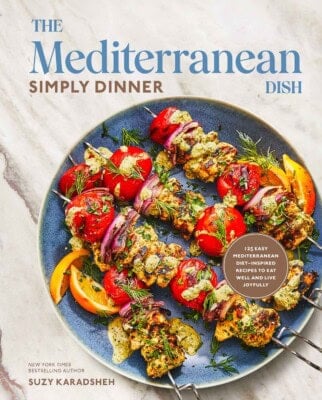
The Mediterranean Dish: Simply Dinner
125 Easy Mediterranean Diet-Inspired Recipes to Eat Well and Live Joyfully
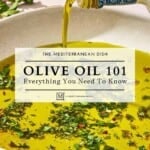
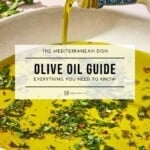
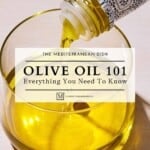
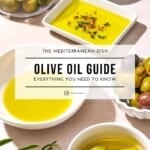
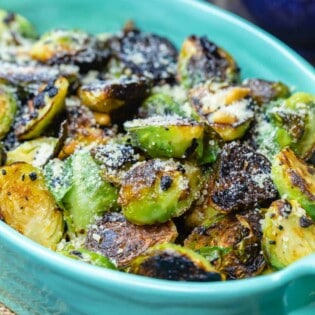
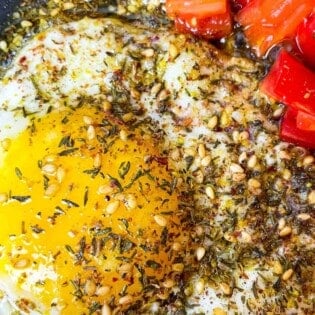

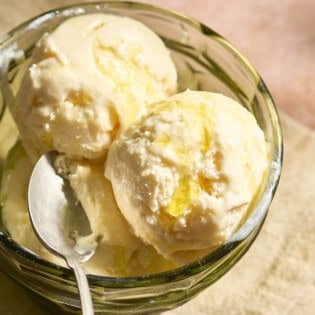
You didn’t mention finishing olive oils. What’s the difference?
Hi, Cari. A finishing oil, in the context of food, is a high-quality oil used to add flavor, color, and texture to cooked dishes. Favorite finishing oils from our collection include: Nocellara, Early Harvest, and Hojiblanca EVOOs.
I’ve seen your reel where you start your day with a shot of olive oil. I know you like the Early Greek harvest oil, but are any of the other oils you have as beneficial for taking on daily basis?
I’m asking because I ordered the sampler of four olive oils to try and wondered if any of those would be okay.
Hi, Mary Lou. All of our extra virgin olive oils are great for this purpose. Each one just has it’s own unique flavor, so choose what tastes best to you.
Such an informative article! I used to think that I was pretty good at picking a quality olive oil but now I feel confident.
Thanks for sharing the information!
You are very welcome, April! So glad you found the article helpful!
How can I buy your olive oil?
Hello! You can click here to find all of our olive oils and descriptions of each :).
Great article. Thanks!
The portuguese olive oil is also very good. I am bias on the topic but Portugal has some of the best olive products I ever saw.
Such an informative article! I would like to know what EVOO is most recommended for baking please.
Many Thanks,
Stacey
Hi, Stacey! For baking, we recommend our Nocellara and Arbequina EVOOs. Hope you give them a try!